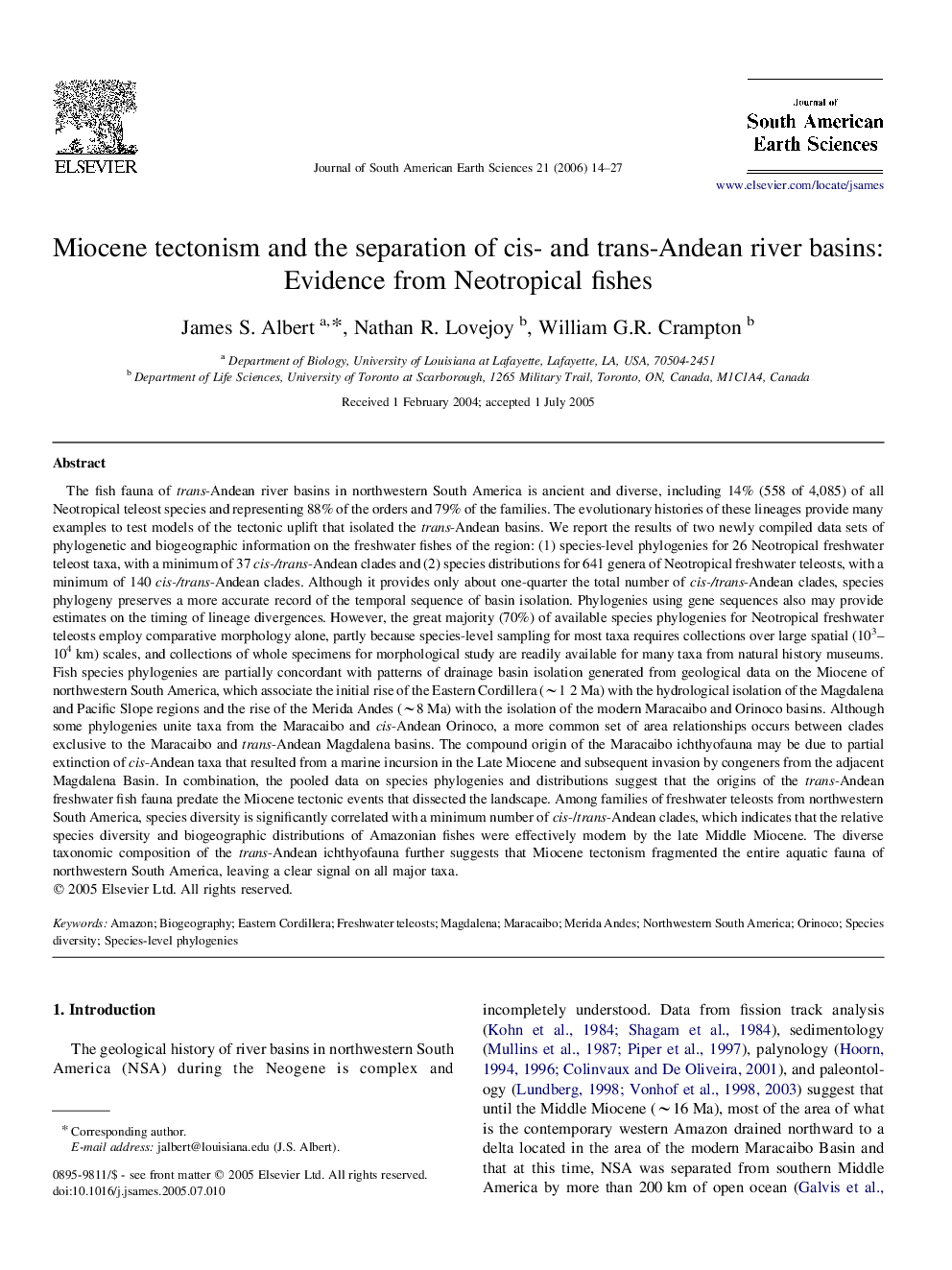| کد مقاله | کد نشریه | سال انتشار | مقاله انگلیسی | نسخه تمام متن |
|---|---|---|---|---|
| 4683050 | 1635183 | 2006 | 14 صفحه PDF | دانلود رایگان |

The fish fauna of trans-Andean river basins in northwestern South America is ancient and diverse, including 14% (558 of 4,085) of all Neotropical teleost species and representing 88% of the orders and 79% of the families. The evolutionary histories of these lineages provide many examples to test models of the tectonic uplift that isolated the trans-Andean basins. We report the results of two newly compiled data sets of phylogenetic and biogeographic information on the freshwater fishes of the region: (1) species-level phylogenies for 26 Neotropical freshwater teleost taxa, with a minimum of 37 cis-/trans-Andean clades and (2) species distributions for 641 genera of Neotropical freshwater teleosts, with a minimum of 140 cis-/trans-Andean clades. Although it provides only about one-quarter the total number of cis-/trans-Andean clades, species phylogeny preserves a more accurate record of the temporal sequence of basin isolation. Phylogenies using gene sequences also may provide estimates on the timing of lineage divergences. However, the great majority (70%) of available species phylogenies for Neotropical freshwater teleosts employ comparative morphology alone, partly because species-level sampling for most taxa requires collections over large spatial (103–104 km) scales, and collections of whole specimens for morphological study are readily available for many taxa from natural history museums. Fish species phylogenies are partially concordant with patterns of drainage basin isolation generated from geological data on the Miocene of northwestern South America, which associate the initial rise of the Eastern Cordillera (∼1 2 Ma) with the hydrological isolation of the Magdalena and Pacific Slope regions and the rise of the Merida Andes (∼8 Ma) with the isolation of the modern Maracaibo and Orinoco basins. Although some phylogenies unite taxa from the Maracaibo and cis-Andean Orinoco, a more common set of area relationships occurs between clades exclusive to the Maracaibo and trans-Andean Magdalena basins. The compound origin of the Maracaibo ichthyofauna may be due to partial extinction of cis-Andean taxa that resulted from a marine incursion in the Late Miocene and subsequent invasion by congeners from the adjacent Magdalena Basin. In combination, the pooled data on species phylogenies and distributions suggest that the origins of the trans-Andean freshwater fish fauna predate the Miocene tectonic events that dissected the landscape. Among families of freshwater teleosts from northwestern South America, species diversity is significantly correlated with a minimum number of cis-/trans-Andean clades, which indicates that the relative species diversity and biogeographic distributions of Amazonian fishes were effectively modern by the late Middle Miocene. The diverse taxonomic composition of the trans-Andean ichthyofauna further suggests that Miocene tectonism fragmented the entire aquatic fauna of northwestern South America, leaving a clear signal on all major taxa.
Journal: Journal of South American Earth Sciences - Volume 21, Issues 1–2, March 2006, Pages 14–27